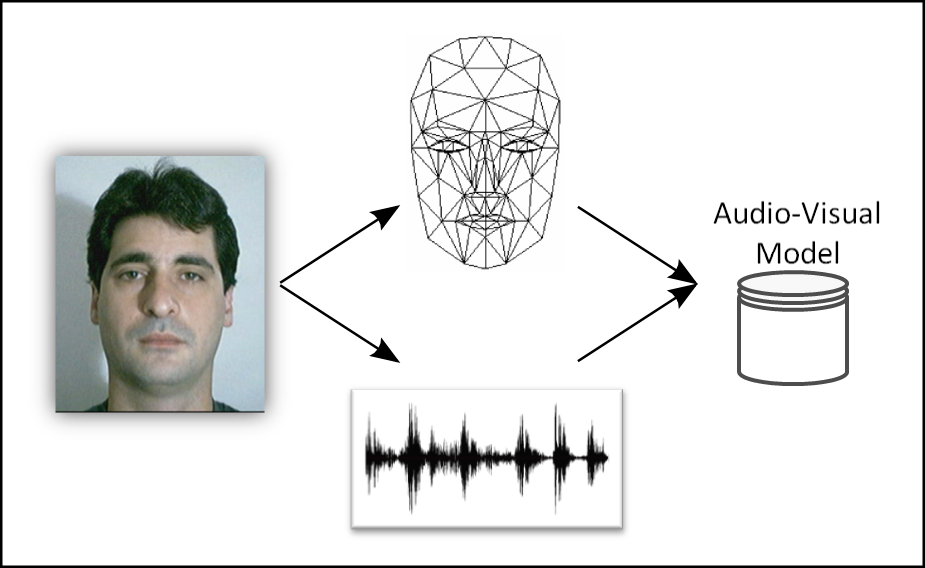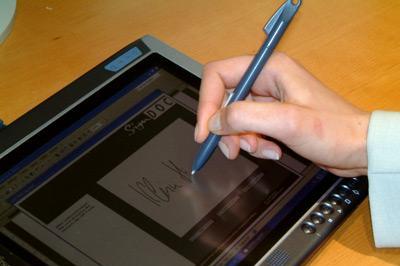
In human communication, both the acoustic information contained in the speech signal and the visual information related to the facial movements produced by the speaker are important for the intelligibility of the message.
In this context, this project investigates the development and implementation of new technologies using audio-visual information integration, mimicking the communication mode in humans. In particular, this research is focused on applications of speech-driven facial animation and audio-visual speech recognition.
Researchers: Lucas D. Terissi; Gonzalo Sad and Juan Carlos Gómez.

The general aim of the project is to design an automatic handwritten signature verification system that can achieve a good performance in terms of the False Rejection Rate (FRR) and False Acceptance Rate (FAR) errors. Applications of the developed algorithms on personal identity verification systems are considered. The project involves the evaluation of the advantages and disadvantages of the off-line and on-line approaches, the development of signal and image processing techniques for data pre-processing, the analysis of different feature extraction approaches, and the study of different types of classifiers.
Researchers: Marianela Parodi and Juan Carlos Gómez.
System Identification deals with the construction of mathematical models of dynamical systems based on measurements of their inputs and outputs. In this project, research is carried out on identification of block-oriented nonlinear models consisting of the interconnection of Linear-Time-Invariant (LTI) systems and static nonlinearities. In particular, Hammerstein and Wiener models are being considered. Techniques based on Subspace Methods, Support Vector Regression and Orthonormal Bases are being investigated.
Researcher: Juan Carlos Gómez.
The 3D rendering of baked materials such as ceramics, and even baked foods, is a difficult computational problem which is still waiting for a satisfactory solution. The growing power of the GPU (Graphics Processing Unit), and its superior capacity against CPUs of similar cost, together with the advent of libraries that enables their use as general purpose devices (OpenCL, CUDA), make them a flexible and powerful tool to undertake the above mentioned rendering problem.
This work proposes the study, modeling and implementation of physical systems in graphics hardware, in order to produce all the characteristics which defines a material, introducing the time variable, in order to be able to produce photorealistic images that could be animated. In this way it will be possible to produce materials which do not change its appearance over time and also those which changes internal structure or chemical properties. Using this approach materials could be simulated in real time.
Researchers: Rodrigo Baravalle; Juan Carlos Gómez and Claudio Delrieux (UNS).
Digital Watermarking has become the most efficient and widely used technique to protect copyright data in an imperceptible and robust way. The embedded information (watermark) should always be present and detectable but users should not be aware of its existence. In this project, research is carried out on the design and implementation of image adapted watermarking techniques in transform domains (DWT and SVD), the study of their robustness, and the design of perceptual metrics to quantify the fidelity of the watermarked images.
Researchers: Franco Del Colle and Juan Carlos Gómez.